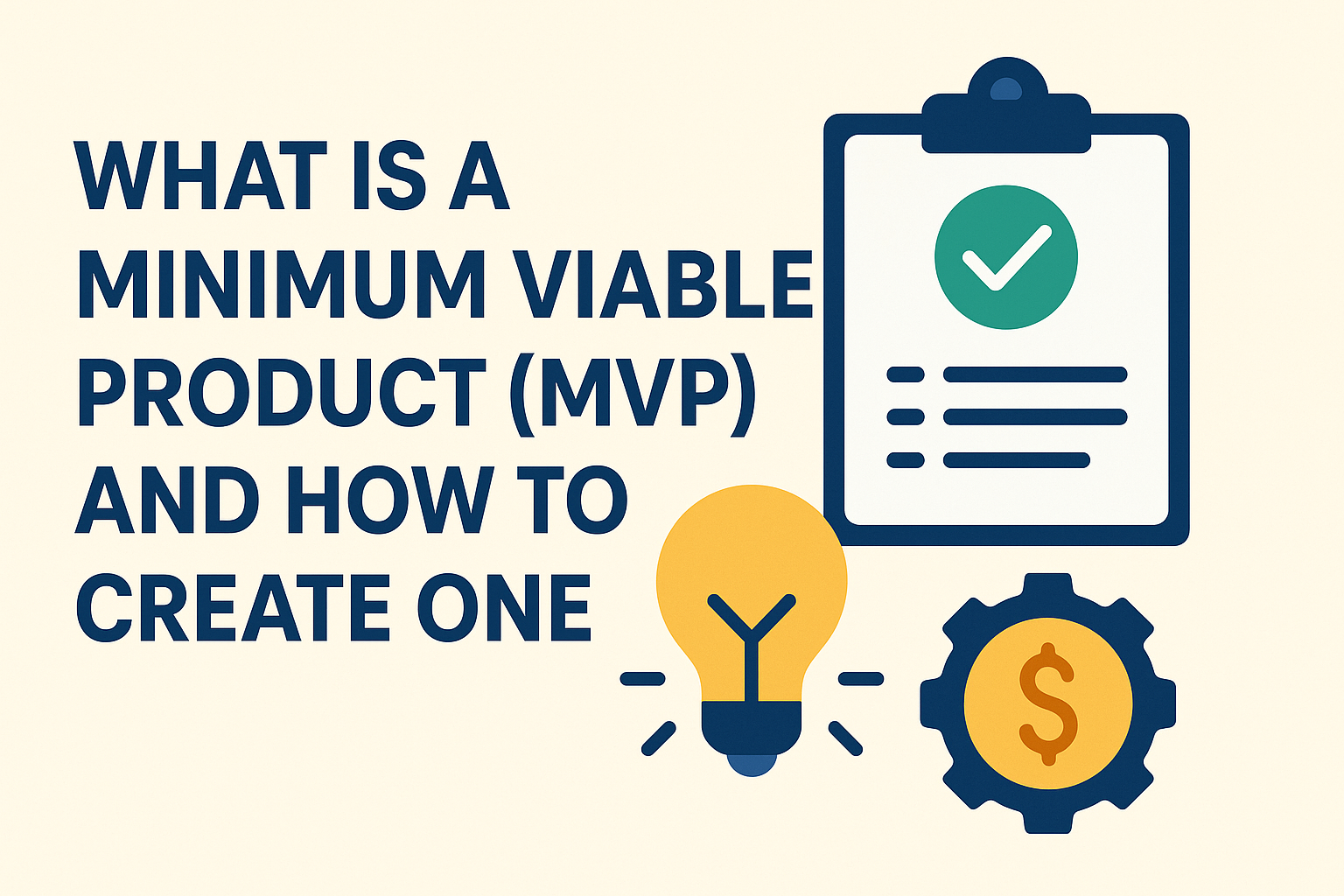What Is a Minimum Viable Product (MVP) and How to Create One
If you’re a new entrepreneur, launching your product or service doesn’t have to involve huge investments or endless months of development. In fact, one of the smartest ways to start is by building a Minimum Viable Product (MVP) — a simple version of your idea that allows you to test, learn, and improve quickly.
In this guide, you’ll learn what an MVP is, why it matters, and how to create one effectively — even with a tight budget.
What Is a Minimum Viable Product (MVP)?
A Minimum Viable Product is the most basic version of a product that still provides value to early users. It includes just enough features to be usable and testable — and no more.
Key goals of an MVP:
- Launch quickly
- Collect real user feedback
- Validate your idea with minimal investment
- Avoid wasting time building features people don’t need
An MVP is not a prototype or a concept sketch. It’s something usable, simple, and functional that delivers a real outcome — even if imperfectly.
Why MVPs Are Essential for Small Businesses
Many startups fail because they spend too long building something before validating whether anyone wants it.
With an MVP, you can:
- Get to market faster
- Avoid overbuilding features that don’t matter
- Learn directly from your target audience
- Save money and reduce financial risk
- Attract early adopters and even generate revenue
Instead of guessing, you gather real-world data to guide your next steps.
Step 1: Identify the Core Problem
Every great MVP starts with a clear understanding of the problem you’re solving. Focus on one specific pain point for one specific group of people.
Ask:
- Who is my ideal customer?
- What urgent or frustrating problem do they face?
- How are they currently solving it?
- What solution would feel like a relief?
The clearer the problem, the easier it is to design a lean solution.
Step 2: Outline Your Value Proposition
Your value proposition is what makes your offer compelling. It explains why someone would want your MVP right now — even in its simplest form.
Complete this sentence:
My MVP helps [target customer] achieve [specific result] by [solution or feature].
Example:
My MVP helps busy freelancers track expenses effortlessly by using a no-login, spreadsheet-based tool.
Step 3: Strip It Down to the Essentials
Now that you know the problem and value, identify the core features needed to deliver the result. Avoid feature creep.
Ask:
- What’s the fastest way to deliver the solution?
- What’s absolutely essential to the user’s success?
- What can I leave out (for now)?
Example:
Instead of building a full budgeting app with charts and accounts, start with a Google Sheet that calculates totals and expenses.
Step 4: Choose the Right Format for Your MVP
Your MVP doesn’t have to be tech-heavy. Use whatever format gets the job done.
Common MVP formats:
- Google Docs or PDFs – For guides, templates, or online courses
- Landing pages – To test interest in a product or service
- Manual services – Offer services manually before automating
- No-code tools – Use Carrd, Webflow, or Notion to simulate apps
- Pre-orders – Sell before building, then deliver later
- Live workshops – Offer training live before creating evergreen content
Remember: You’re testing the concept, not the polish.
Step 5: Launch to a Small Audience
Don’t wait for perfection. Share your MVP with a small, relevant audience who will give honest feedback.
Ways to launch:
- Email your contacts
- Post in relevant Facebook or LinkedIn groups
- Use Reddit or subreddits related to your niche
- Share on Twitter, TikTok, or Instagram
- Partner with micro-influencers
Make sure people understand that it’s a first version and their feedback is valuable.
Step 6: Collect and Analyze Feedback
You’re not just looking for compliments — you need insights.
Ask users:
- What did you like or find useful?
- What was confusing or frustrating?
- What’s missing that you expected?
- Would you recommend it to a friend?
- Would you pay for a better version?
Track recurring themes and use this feedback to guide improvements.
Step 7: Iterate and Improve
Based on real-world feedback, decide what to do next:
- Add new features people requested
- Improve usability or design
- Raise your prices if people saw high value
- Remove or change what didn’t work
- Pivot if needed (change focus or audience)
An MVP is meant to evolve. Use it as a springboard — not the final product.
Real-Life MVP Examples
1. Dropbox – Launched with just a video demo to validate demand before building the product.
2. Airbnb – Started by renting out their own apartment to test the concept.
3. Buffer – Built a landing page to test interest in a tweet scheduling tool before writing any code.
4. Zappos – Founder listed shoes online and bought them manually from stores to fulfill early orders.
Final Thoughts: Launch Lean, Learn Fast
Your first product doesn’t need to be perfect. It needs to be real, functional, and testable. With an MVP, you reduce guesswork and build something that people actually want.
Start small. Deliver value. Learn quickly. Then build something amazing — with confidence and proof.
